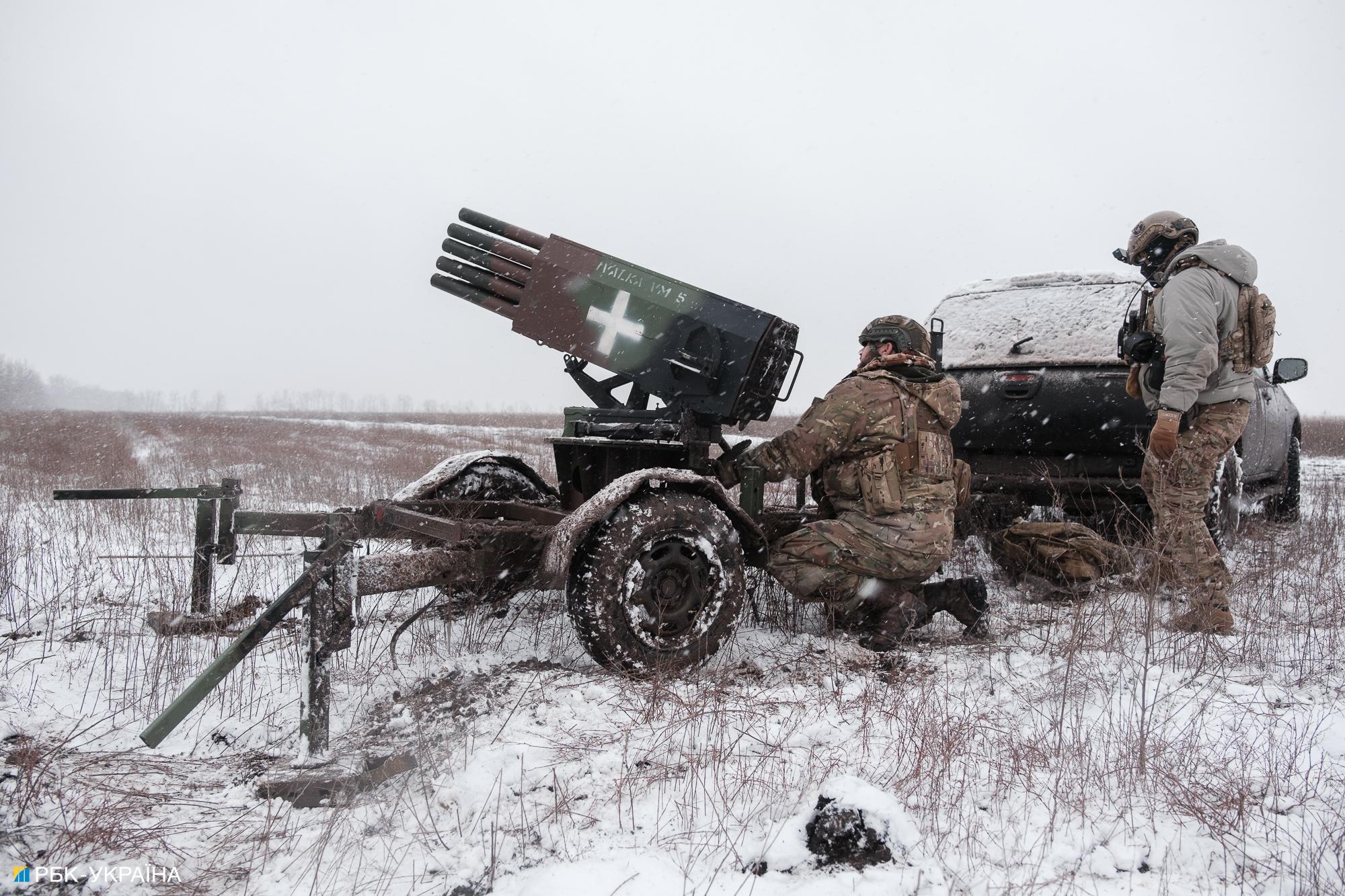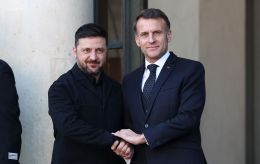Critical winter: Will Russia strike Ukraine’s power grid and can Trump shift Putin’s strategy?
 Repairing Ukraine's power system after a Russian attack (photo: Getty Images)
Repairing Ukraine's power system after a Russian attack (photo: Getty Images)
Whether there will be massive shelling of the Ukrainian energy sector, what favorable conditions the Russians are waiting for, how they are changing their tactics both with massive shelling and at the front, and whether Trump's arrival has already affected the current situation in Ukraine read in RBC-Ukraine article.
Russia began targeting Ukraine's energy infrastructure two years ago, in mid-October 2022. During this period, Russian air forces caused significant damage to Ukraine's energy system, knocking out half of its capacity.
Thanks to its own efforts and assistance from allies, Ukraine has managed to restore about a third of its capacity, but during peak electricity demand, shortages are still expected. Ukrenergo (National Energy Company of Ukraine) stated that power outages would occur on the coldest winter days, regardless of whether Russia attacks energy facilities or not.
Immediately after Donald Trump's victory in the US presidential election, public speculation arose, including from Russians themselves, that missile attacks on Ukraine would soon cease. In the early hours of November 11, Russian air forces moved their aircraft to launch positions, creating an illusion of readiness for a mass attack, which ultimately did not occur. That same morning, Western media reported on a conversation between Trump and Russian dictator Vladimir Putin, reigniting theories about a possible deal in the works.
Today, on November 13, Russians again deployed several strategic aviation units in the air. However, the Tu-95 aircraft, upon reaching launch positions, appeared to engage primarily in simulation maneuvers. Nevertheless, Russia did strike Kyiv, launching several Kh-101/55 cruise missiles and a Korean ballistic KN-23 missile. The enemy also directed another wave of drones at the capital. The targets of these attacks remain unclear, but this barrage can hardly be called massive.
"Let me remind you that the enemy is fully prepared for a large-scale attack; the Russians have stockpiled cruise missiles and continue to do so for the winter. The use of strategic aviation confirms this. All of the enemy’s plans are clear, and Ukraine will counter them," stated Kovalenko.
Meanwhile, Ukrainian political and military experts indicate that strikes on energy infrastructure are likely. With two and a half months remaining until the inauguration date (January 20), it is highly unlikely that Moscow will "pause" the war during this period.
Drones instead of missiles
For several months now, Russia has been attacking Ukraine with drones nearly every night. The only night without a mass attack was October 14. Russian air forces are deploying dozens of Iranian Shahed drones and other UAVs against Ukraine, including reconnaissance drones and decoys. The last major missile attack on Ukraine occurred on August 26. There are several reasons why Moscow is currently emphasizing drones rather than missile salvos.
Firstly, Russia has no issues with UAV production; in fact, it has ramped up production to the point where they are producing drones for immediate strikes and stockpiling them by the thousands. Given that an average of 50 drones are launched in Ukraine each night, supplies will likely last for a long time.
The increase and rapid production of drones are due to Russia’s prioritization of quantity over quality, opting for cheaper and faster production without striving for major improvements. However, some innovations have been introduced, notes Oleksandr Kovalenko, a military and political observer of the Information Resistance group.
"They (Russians - ed) continue to experiment. They are using many decoy drones without warheads aimed at diverting attention. They have also started using new warheads for kamikaze drones, sometimes altering their flight characteristics. For example, they now often fly at low altitudes, around 200 meters, instead of the usual 1.5-2 km," Kovalenko said.
At 200 meters, drones are technically difficult to shoot down without risking damage to buildings or rooftops they fly over. Additionally, attempts to confuse and exhaust the air defense system are another reason Russia has temporarily refrained from massive but costly and rare missile attacks.
In any case, Ukraine is requesting air defense systems and munitions from its allies. With a political deadlock in the US, Ukraine’s air defense ammunition supplies have been depleted to the point where Russia has destroyed several thermal power plants. Afterward, President Volodymyr Zelenskyy stated openly that the Trypillia Power Plant was wiped out because nothing was left to defend it.
However, Ukrainian forces are also finding ways to avoid wasting expensive resources on cheap Shahed drones. Using effective combinations, Ukrainian air defense continues to destroy Russian, Iranian, and Chinese drones, maintaining consistently high success rates.

Iran's Shahed-136 drone (photo: Getty Images)
"So far, we are seeing success in intercepting drone attacks, with high air defense efficiency rates. We hope that the situation has improved against combined missile strikes compared to 2023 or the first half of 2024," Kovalenko added.
Oleksandr Musiienko, head of the Center for Military and Legal Studies, says another reason for Russia's limited attacks is its strategy of stockpiling. A single large-scale salvo is highly costly to Moscow. Effective strikes involve various missiles, including cruise and ballistic missiles, which are very expensive. It's much easier to keep Ukraine on edge with endless drone attacks than to launch a dozen costly missiles weekly, only a few of which might reach their targets.
"They are also stockpiling ballistic missiles, though they face challenges. Many of these missiles have already been used against Ukraine, so it takes time to produce and replenish them, which is not a simple process," Musiienko explained.
Russia is practically ready for a large-scale strike, as demonstrated by the maneuvers on Monday, November 11. Western media mistakenly attribute the sudden grounding of aircraft and the cancellation of the attack to the reported conversation between Putin and Trump. In reality, the Russians have performed such maneuvers in the past, making it unlikely that the future US president had any influence on the Russian dictator’s plans.
"They routinely perform these maneuvers; the MiG-31 has frequently done this, as have the 95MS and 22M3 aircraft. There’s no need to read conspiracy theories into this. It’s routine work for strategic aviation," Kovalenko added.
For now, the Russians are focusing and preparing to strike. But to execute a successful attack, it must be timed perfectly. So, Moscow is waiting.
Attacks on civilians and the frontlines
Russian forces have consistently targeted frontline areas with missiles and guided bombs. On the night of November 11, Russian troops launched several Iskander missiles at Mykolaiv, demolishing a four-story building and several private homes. That same day, a missile strike hit a residential building in Kryvyi Rih. Cities like Zaporizhzhia, Sumy, Kharkiv, and Kherson are frequently targeted, not to mention the ongoing strikes along the frontline.
However, the much-anticipated mass strikes are unlikely to occur before the onset of colder weather. Currently, temperatures in Ukraine are not low enough for attacks on power stations to yield significant damage, as repairs could be done quickly. According to Roman Kostenko, a member of parliament from the Voice party and an active-duty soldier, Russia is likely waiting for sustained cold temperatures that would make it more difficult for Ukraine to repair the power grid and leave civilians vulnerable to freezing conditions in their homes.
"They’ll likely begin targeting energy infrastructure closer to winter, when the damage will have more impact, making repairs harder and more urgent. We must be prepared for this. If this can be resolved politically with our allies' support, that would be ideal, but it’s unrealistic to expect Russia to pause its aggression,” Kostenko told RBC-Ukraine.
Military analyst Kovalenko suggests that Russia may briefly stop attacks as a symbolic gesture a week before Trump's inauguration. However, such restraint is unlikely over the next 2.5 months, during which Russia hopes to pressure Ukraine into a more favorable negotiating position.
"Do they expect something from Trump in 2.5 months, hence delaying attacks? No. A demonstrative pause may occur a week before the inauguration—not now. What we saw on November 11 was an average maneuver, part of their usual preparations for strikes,” Kovalenko said.
Meanwhile, Russian forces are consistently launching reconnaissance drones to survey Ukraine’s energy and other critical infrastructure. Russian forces have adjusted their approach based on past experiences, with Ukrainian military analysts and media outlets like Politico noting that Russia has refined its tactics against Ukrainian energy infrastructure. For instance, to reserve long-range missiles for energy facilities, Russia has acquired short-range Fath-360 ballistic missiles from Iran, which it uses against logistical hubs, transport nodes, and near-frontline areas.

Ukrainian soldiers at the front (photo: Vitalii Nosach/RBC-Ukraine)
There is no indication that Russia plans a tactical pause on the frontlines, despite reports from some Russian military bloggers. Russian troops are advancing steadily, with a recent focus on the Kurakhove direction.
“This indicates that the enemy lacks sufficient resources to advance across all directions simultaneously. They’re concentrating on areas where they see the most potential, like Kurakhove, which is currently semi-surrounded, and we’ll need considerable effort to avoid encirclement,” Kostenko explained.
Russia seems to be concentrating most of its resources on advancing towards the administrative borders of the Donetsk and Luhansk regions. There is also activity in the Zaporizhzhia and Kherson directions, but these appear to be “opportunistic” maneuvers taken when openings arise. Moscow remains focused on the Donetsk and Luhansk regions as its primary objectives.
Awaiting Trump
In modern philosophy, there is a concept called the "black swan." Simply put, it refers to any situation that is impossible to predict yet radically changes the state of affairs, often dramatically.
Donald Trump, who promised to end the war within 24 hours and has since made several contradictory statements, could become — or trigger — a "black swan," altering the current balance of power and situation. So far, no one can say what will happen, but cautious forecasts are periodically being voiced. One of the most frequently mentioned is the possible "freezing" of the war.
Building on this theory, it’s conceivable that Russia, attempting to present itself as a good and noble rival, might refrain from unleashing a brutal missile barrage on Ukraine just before the American president’s inauguration. However, there are currently no indications that this will be the case.

Ukrainian energy workers repairing the system after Russian attacks (photo: Getty Images).
Russia will continue targeting Ukraine’s energy sector to make Kyiv “more agreeable” and compel concessions. The aim of occupying as much territory as possible before negotiations also aligns well with Russia's strategy. This scenario opens the door to numerous potential outcomes, each involving Trump and his proposals in a critical role. However, no one can predict what these proposals will entail or whether they will favor Ukraine’s sovereignty. At the very least, the Ukrainian side knows which proposed scenarios could be most disastrous.
“Russia could propose the following: we stop firing, but you don’t provide Ukraine with anything so it can’t militarize. In this scenario, no one supplies weapons to Ukraine to avoid provoking Russia, while Russia uses this time to recover. This is the scenario we don’t need. Everyone is awaiting Trump’s decision, including the Russians,” added Kostenko.

